Roof Garden Azotea Ideas: Transform Your Space into a Green Haven
Creating a roof garden, also known as an azotea, can transform an ordinary rooftop into a charming oasis. Whether you have a small or large space, you can make the most of it by adding greenery, seating areas, and even small water features to create a peaceful retreat high above the city hustle.

Imagine having a private garden right on your rooftop where you can relax and entertain. Roof gardens not only add beauty to your home but also provide a green space that can help reduce the urban heat effect. By incorporating different design elements and plants, you can create a unique and personal outdoor space right on your rooftop.
1) Succulent Garden

Succulents are great for a rooftop garden. They are low-maintenance and can thrive in sunny conditions. You can arrange them in small pots or larger containers for a varied look.
Mix different types of succulents to add color and texture to your garden. Consider using green, orange, and purple succulents for a bright and fun design.
Using rocks and pebbles can make your succulent garden pop. Try placing some succulents in a decorative pattern. This can create a unique and visually appealing space on your rooftop.
2) Herb Planters

Growing herbs on your roof garden is a fantastic idea. You can use lightweight containers made of plastic or fiberglass to reduce the load on your rooftop.
Consider hanging macramé planters by a sunny window. These planters allow herbs to bask in sunlight.
Another option is using hanging shelves with terra-cotta pots. They can create a beautiful vertical display for your herb garden.
Herbs like basil and mint do well in containers. Basil adds a fresh touch to your dishes, while mint is perfect for drinks.
3) DIY Pergola
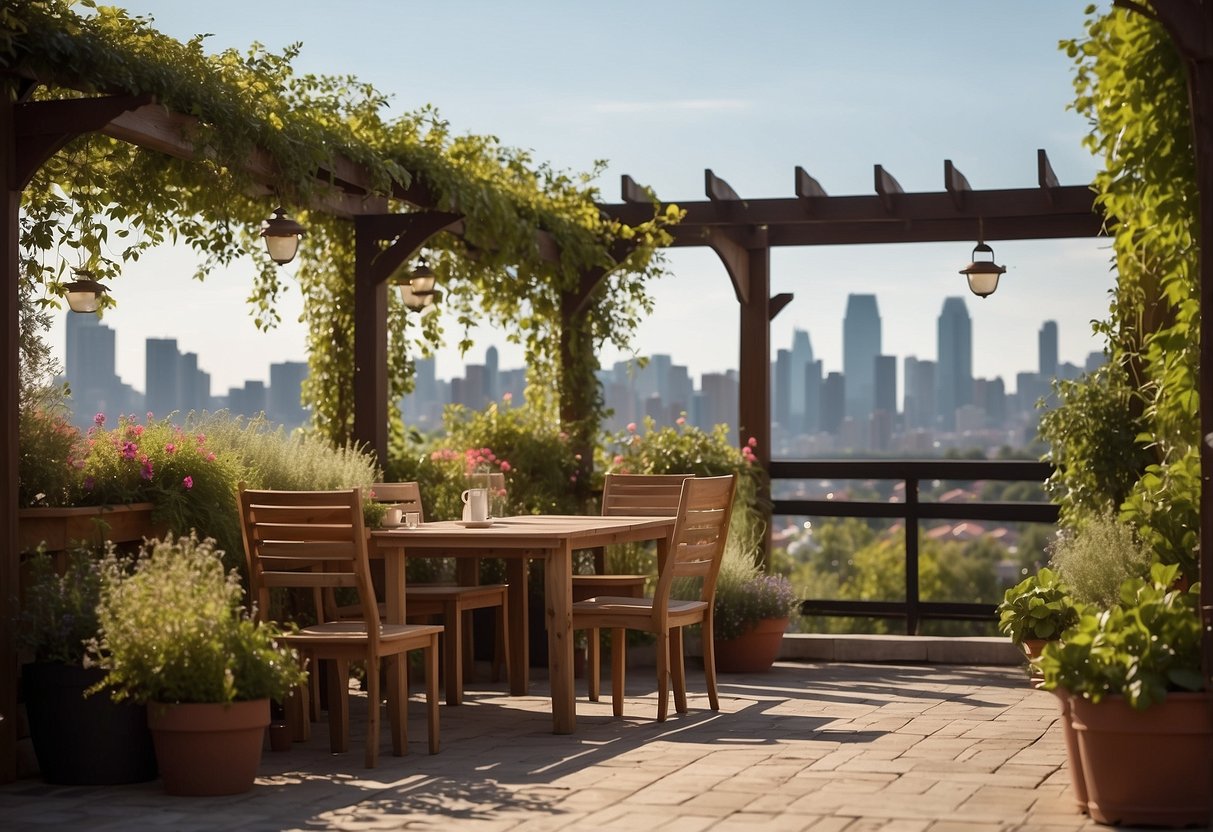
Building a pergola for your roof garden can be a fun and rewarding project. It adds shade and creates a cozy setting. You can use materials like bamboo or recycled pallets to keep the project budget-friendly.
Consider adding a water feature, like a small fountain, for a relaxing touch. This will enhance the peaceful vibe of your space.
For a bohemian look, you might try using bamboo matting or reed fencing. It’s easy to install and looks great. Check out these pergola roof ideas for more inspiration.
4) Vertical Garden Wall
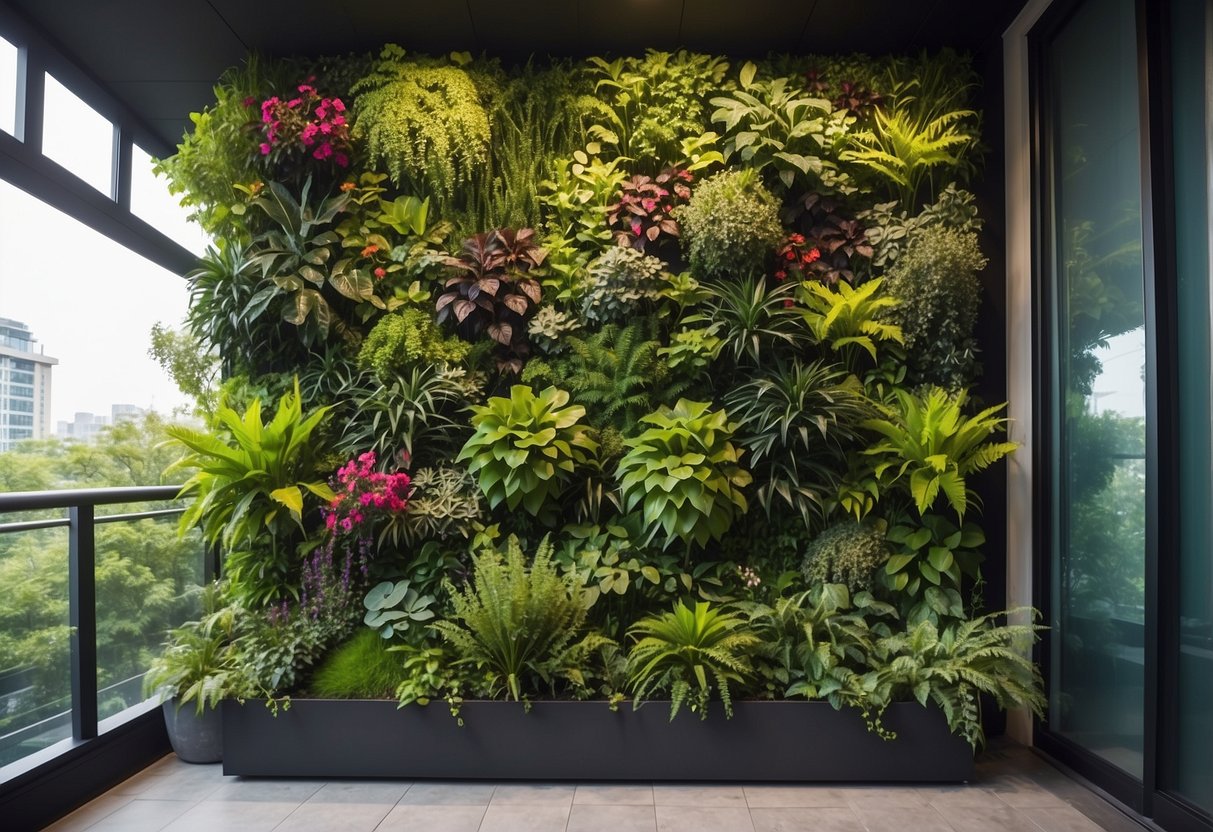
A vertical garden wall is a great way to maximize space on your roof garden.
You can create these walls using materials like wooden pallets, trellises, or wire mesh panels.
Consider adding planters to a slat wall to enhance the look and add more greenery to your space with ideas from The Spruce.
This setup works well for various plants, from herbs to flowers, giving your garden a lush, vibrant feel.
5) Outdoor Lounge Area
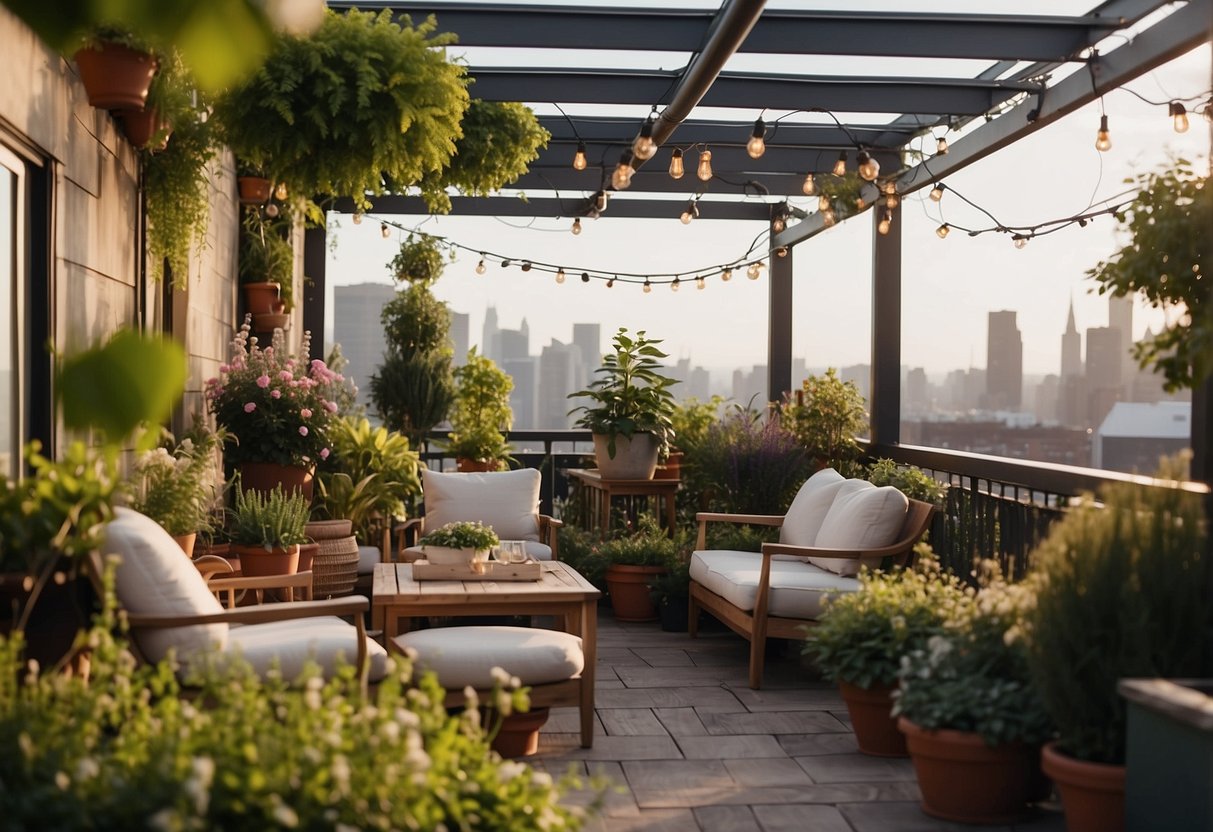
Creating an outdoor lounge area on your azotea can transform your rooftop into a cozy retreat. Add comfortable seating like cushioned sofas and lounge chairs.
Include a coffee table or side tables for convenience. To enhance the atmosphere, introduce soft lighting with string lights or lanterns.
Decorative elements like throw pillows and outdoor rugs can add a personal touch. Consider adding some potted plants for a touch of greenery. Enjoy relaxing with friends or reading a book in your new outdoor haven!
6) Fairy Light Canopy
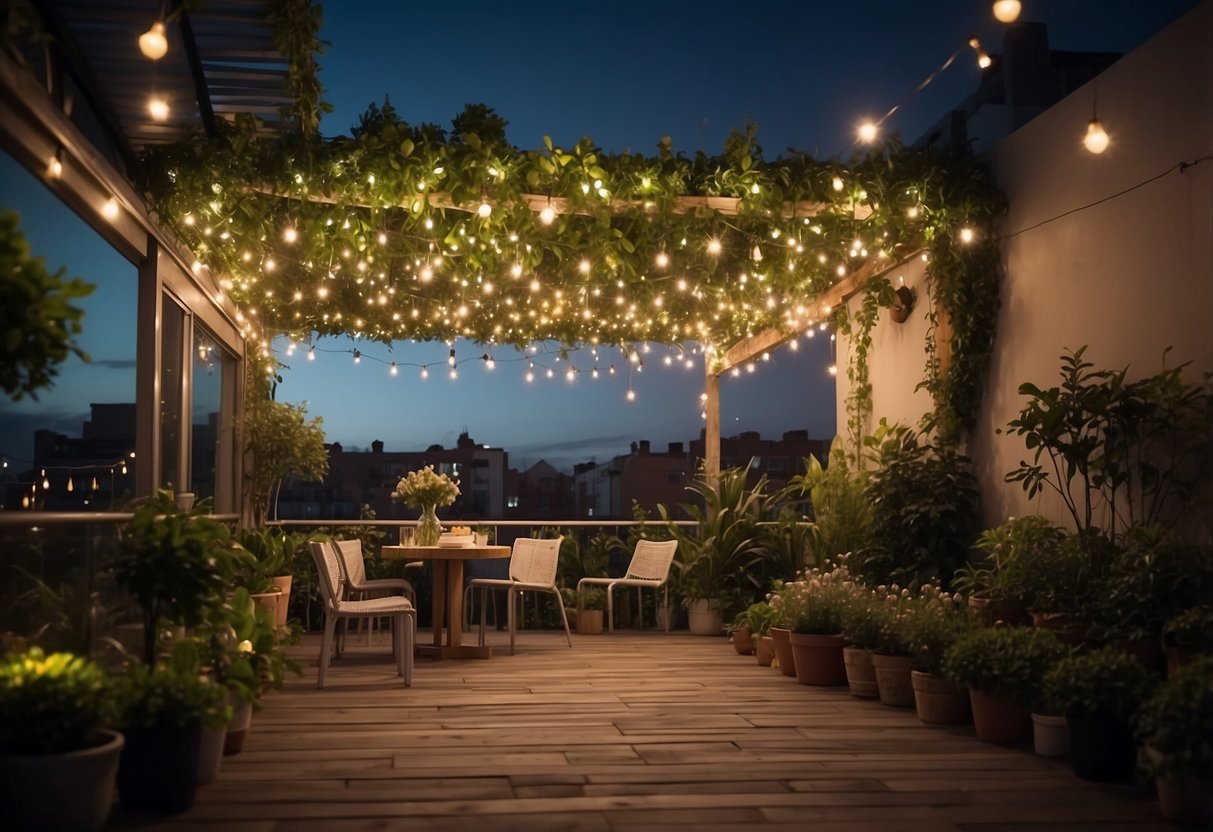
Brighten your roof garden azotea with a magical fairy light canopy. String the lights across the space to create a ceiling of twinkling stars.
Use outdoor fairy lights to add a touch of charm.
For a playful look, try using colorful lanterns like the ones recommended here to create a bohemian vibe.
7) Portable Fire Pit
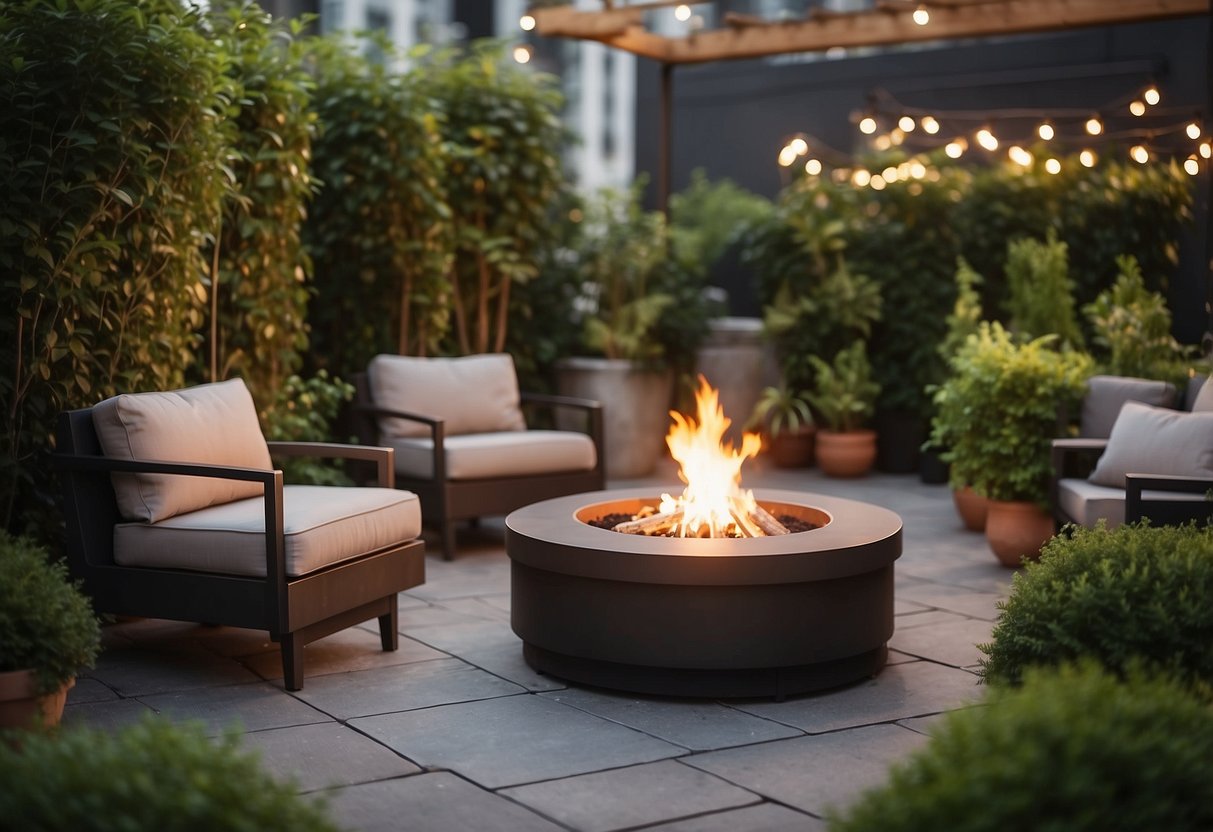
Adding a portable fire pit to your roof garden azotea can create a cozy atmosphere. It’s perfect for chilly nights when you want to relax outdoors.
Portable fire pits are easy to move around, so you can place them wherever you like. They come in various sizes and styles to match your garden’s decor.
A small, wood-burning or metal fire basket can fit nicely in most spaces. Just ensure it’s placed on a fireproof surface to prevent any accidents.
Creating a warm and inviting corner in your garden has never been easier!
8) Hammock Corner

Create a cozy spot on your roof garden by adding a hammock. Choose a sturdy model and secure it between two strong points, like pergola posts or sturdy beams.
Decorate the area with soft pillows and a few potted plants for a touch of green.
To make the space even more inviting, consider hanging waterproof string lights above the hammock for evening relaxation.
9) Water Fountain Feature
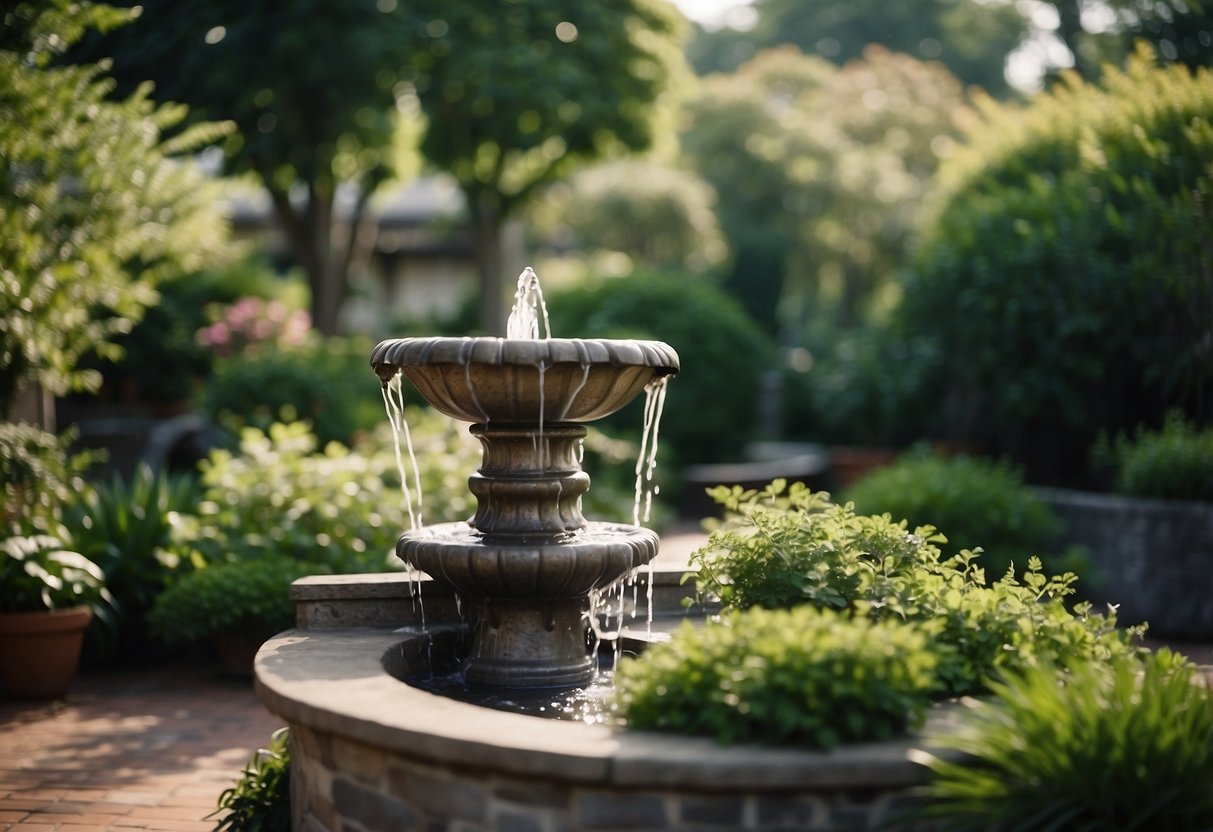
A water fountain can turn your roof garden into a peaceful retreat. You can choose from many designs, such as sleek modern fountains or classic stone pieces.
Adding a water feature like a fountain not only looks great but also provides a calming sound. This can help you relax after a long day.
Consider placing the fountain near your seating area. This way, you can enjoy the soothing water sounds while you unwind or chat with friends. For rooftop gardens, a fountain with lightweight materials like fiberglass or resin can be easier to install and maintain.
10) Eco-Friendly Furniture
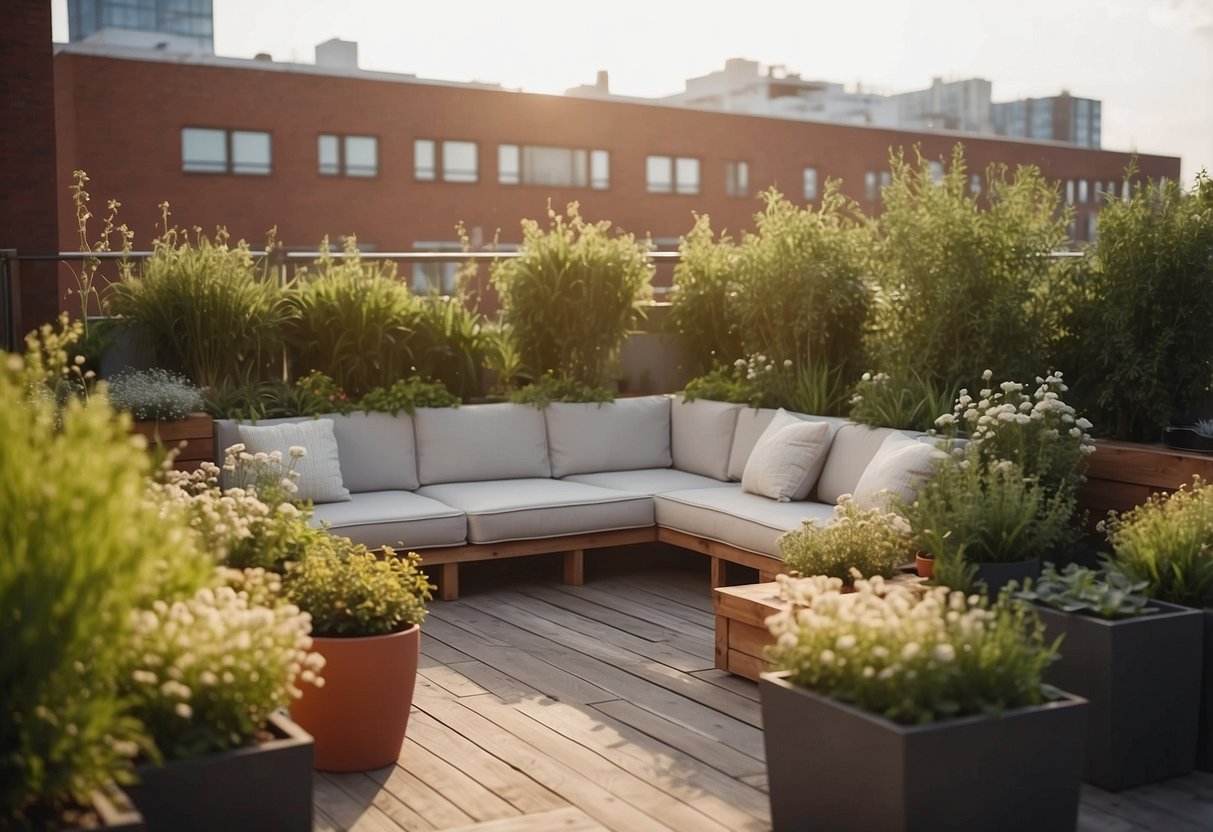
Adding eco-friendly furniture to your roof garden is a great way to enhance its natural feel. Bamboo furniture is a fantastic option. It grows quickly and is very sturdy.
Consider a bamboo swinging chair for a touch of elegance. It’s not only stylish but also sustainable.
You can also use reclaimed wood for benches and tables. This reduces waste and gives your garden a unique look.
Benefits of Roof Gardens

Roof gardens bring many positive impacts, including boosting the environment and improving your health and well-being. Below, you’ll find details on these benefits.
Environmental Advantages
Roof gardens greatly help in reducing urban heat. Cities with many buildings tend to get very hot. Plants on roofs can cool the environment around them, making both buildings and streets cooler. This can save energy by reducing the need for air conditioning.
Rainwater management is another benefit. Roof gardens can absorb rainwater, lowering the risk of floods and easing pressure on drainage systems. This can be particularly helpful during heavy rain or storms.
Air quality improves with roof gardens. Plants trap dust and pollutants, cleansing the air. This can lead to a healthier urban environment. They also help with carbon dioxide reduction, contributing to lower greenhouse gas levels.
Health and Wellness
Having a roof garden can boost your mental health. Green spaces have been shown to reduce stress and improve mood. A garden on your roof gives you a private place to relax and enjoy nature, making for a peaceful retreat from city life.
Physical health can also improve. Gardening can be a great form of exercise. Activities like planting and weeding help you stay active. Plus, if you grow your own vegetables, you’ll have access to fresh, healthy food.
Social interactions can be enhanced through shared roof gardens. They provide a community space where people can meet, talk, and work together on gardening tasks. This can create a sense of belonging and improve social well-being.
Design Principles for Roof Gardens

Designing a roof garden requires careful planning to optimize space and plant selection. The goal is to create a functional and beautiful outdoor area that you can enjoy year-round.
Making the Most of Small Spaces
Space is often limited in roof gardens, so it’s important to use it wisely. Vertical planting is a great way to expand your garden without taking up too much floor space. Trellises, hanging pots, and wall-mounted planters can help you grow more plants without overcrowding.
Multi-level planters can add depth and dimension, giving the illusion of a larger area. Seating that also functions as storage can help keep the space tidy and functional.
Use lightweight furniture that can easily be moved around. Folding tables and chairs are great options as they can be stored when not in use, freeing up more space. Also, consider using mirrors to create an illusion of more space and bounce light around.
Choosing the Right Plants
Selecting the right plants is crucial for a roof garden. Opt for plants that can withstand the unique conditions like wind and direct sunlight. Sedums and succulents are excellent choices as they are hardy and require little maintenance.
Native species are also advisable because they are adapted to your local climate. This makes them easier to care for and beneficial for local wildlife.
Include a mix of evergreens and flowering plants to ensure year-round interest. Use drought-tolerant plants to minimize watering needs. Climbing plants like ivy or hydrangeas can add a lush feel and help to cover unsightly walls.
Choosing plants that thrive in containers is vital. Make sure your planters have good drainage and use high-quality soil to give your plants the best start.
Maintaining a Roof Garden
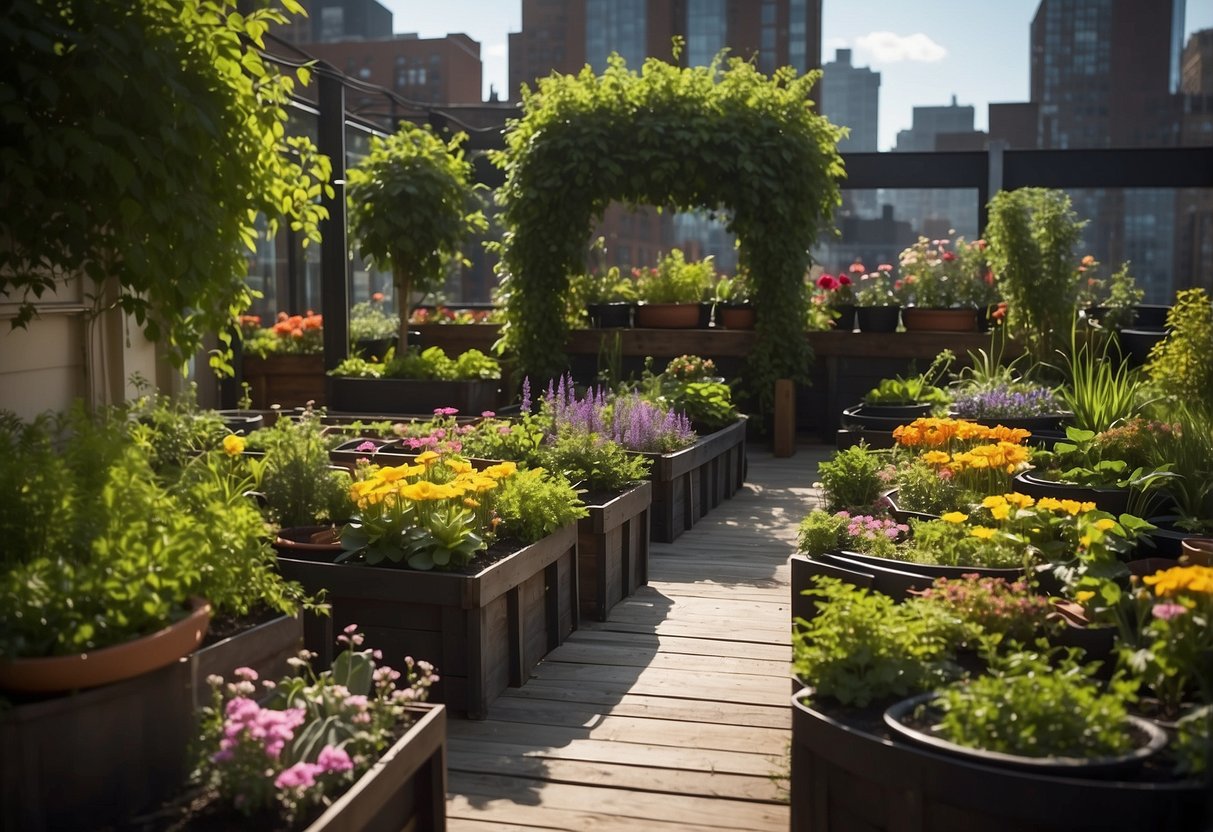
Keeping a roof garden looking great requires regular care. The main tasks involve watering, adjusting care for different seasons, and ensuring plants stay healthy.
Watering and Irrigation
Roof gardens need consistent watering, especially during hot months. Because rooftops get a lot of sun, they can dry out quickly. Use a watering can or install an automatic irrigation system to simplify the process.
Drip irrigation systems are great because they deliver water directly to the roots. They help you save water and make sure plants get enough moisture. Remember to check your system regularly to prevent clogging and leaks.
Water in the early morning or late evening to avoid evaporation. It’s important not to overwater – too much can lead to root rot and other problems.
Seasonal Care Tips
Different seasons mean different needs for your roof garden. In spring, focus on planting new flowers and vegetables. Warmer weather helps them grow quickly.
In summer, protect your plants from intense sunlight. Providing shade with umbrellas or canopies helps them stay cool. Regularly check for pests as they are more active in warm weather.
Fall is the time to prune and remove dead leaves. This helps prevent diseases from spreading. Consider planting winter-hardy plants if you want greenery year-round.
In winter, cover delicate plants with frost cloths to protect them from freezing temperatures. Reduce watering during this time, as plants grow slower and need less water. Regularly clear snow off the roof to avoid excess weight and potential damage.







